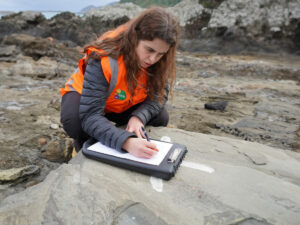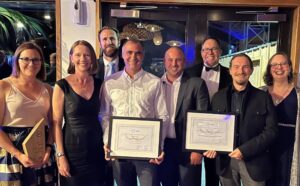More than 600 million people worldwide, including a high proportion of children under five, fall ill every year from eating contaminated food. Ensuring food safety is fundamental to food security, enabling better health and improved nutrition across the globe. Shifts for more sustainable food production, to enhance food security and reduce environmental footprints are seeing circular practices and policies adopted in agrifood systems. However, an emerging concern is how these circular processes will impact food safety.
Exploring this issue, Tonkin + Taylor’s Andrew Pearson, Senior Environmental Consultant, recently collaborated with the United Nations Food and Agriculture Organization (FAO) on a report exploring the evidence of risk to food safety in advancing circular policies in agrifood systems.
The goal was to outline a way to overcome challenges and take advantage of the opportunities transformation to circularity can present to protect and enhance food safety.
The key aspects of the FAO report have also been published separately as a review paper highlighting the risks and benefits to food safety in the circular transformation to water reuse, food waste repurposing, and reuse and recycling of packaging.
 Building Sustainable Agrifood Systems
Building Sustainable Agrifood Systems
Global agrifood systems today face unprecedented pressure triggered by population growth, resource constraints, conflicts, climate changes, biodiversity loss, food insecurity and malnutrition.
Like many production systems, responding to these challenges is driving a change to production models away from linear production (“take-make-use-dispose”) to circular policies and practices that better retain value and reduce waste.
Key areas under review are:
- Reusing and recycling water
- Reducing and repurposing food waste
- Reducing packaging waste
- Improving land use efficiency.
The transformation to circular agrifood systems looks to balance food security against resource efficiency, socioeconomic growth, and environmental sustainability.
For Australia and New Zealand, progress in exploring and adopting the different circular technologies and policies is occurring at a different pace. New Zealand has recently focused on food waste, with initiatives in this area underpinned by a series of reports from Professor Dame Juliet Gerrard.
Australia is advanced in utilising alternative water sources, having designed several water schemes to reuse these sources and they have adopted health and environmental guidelines to do this safely.
 The Challenges
The Challenges
The perishable nature of food means that circular agri-food systems face different challenges from other sectors.
Our current understanding and management of food safety are typically based on a linear system where wastes, that often have inherent hazards (chemical, microbiological and physical), are disposed of. Closing material and processing loops to retain more value from waste means hazards can be retained in food production systems and change the profile for food safety.
Assurance in food safety is the foundation of agrifood systems worldwide and is essential for international trade. Ensuring food safety is critical for the success of the transformation to circular processes and policies in food production. Failure to ensure food safety could mean increasing foodborne illnesses which could stall the progress of the transformation and lead to reduced consumer confidence or restriction to trade.
Across the key areas reviewed for circularity in food production, different food safety risk management plans might be needed.
Water Recycling + Reuse for Agrifood
Water scarcity is an urgent concern for agriculture which represents 70 percent of the water abstracted globally.
Drawing on alternative water sources (such as treated wastewater or agricultural drainage water) increases water efficiency but can mean an increased number of contaminants compared to conventional surface and groundwater sources.
However, these water sources can contain good nutrients that might otherwise be lost if discharged to the environment, so some food production systems (such as aquaponics) are adapting to fully recycle water in a closed loop to retain this value.
Any water source that contains human or animal wastes presents a concern for pathogens (infectious agents) and the linkage of contaminated irrigation water to foodborne disease is well established. These risks will be reduced in crops that are processed or cooked before consumption, and in crops where the water doesn’t contact edible parts.
Alternative water sources can also contain a range of chemical contaminants, that may pass intact through treatment processes, and combinations of pathogens and chemicals can also lead to a risk of antimicrobial resistance.
Food Loss + Waste
Between the post-harvest and retail stages of the food chain, the global system loses about 14% of the food produced, while around 17% of the total food produced is wasted at the retail and consumer stages.
The inedible by-products of food, such as bones, shells, and rinds, may also go to waste. Aside from losing potential nutritious food, this food waste (when disposed of in landfill) uses up valuable space and results in a loss of energy and nutrients from the production system.
An area of focus is upcycling these wastes, for example extracting bio actives, or recovering the nutrients through composting to return them to the production system and ease the pressure on using virgin resources. Novel approaches, such as raising insects on food waste, are being explored as efficient ways to bio-convert food waste.
Drawing from food waste to produce new foods or feeds, or to compost for nutrients, runs the risk of transferring pathogens, parasites, and chemical contaminants that may be present, or have formed, in the original food. Food waste repurposing of inedible by-products may lead to plant toxins or pesticides present in the by-products being concentrated in the upcycled product.
Packaging Waste
Food packaging plays an important role in preventing food from being damaged, spoiling or becoming contaminated, ultimately reducing food waste. However, the throwaway nature of food packaging generates substantial waste, with plastics a concern given the reliance on fossil fuel sources to manufacture and high leakage from waste to the environment.
Recycling is already established for some packaging types such as glass and aluminium – there are challenges to overcome for plastics, while reusable packaging is a solution to extend the life of containers. Active packaging, intelligent packaging, edible packaging and packaging for renewable materials are all being developed to limit waste.
The challenges for packaging reuse and recycling are managing the risk of contaminants persisting from former uses, particularly with the presence of non—intentionally added substances in plastics, which can present a concern if they migrate to foods.
Ensuring packaging doesn’t degrade with multiple uses, potentially releasing microplastics, and maintaining integrity for stored food is also key.
New packaging material development may use or recycle materials that also contain contaminants, for example, pesticide residues or allergens.
 Looking Forward
Looking Forward
How we currently produce, distribute, and consume food places various pressures on agrifood systems, driving global change to be more efficient, inclusive, resilient, and sustainable to meet multiple United Nations Sustainable Development Goals.
Creating sustainable agrifood systems that provide safe, affordable, and healthy diets against these pressures requires decisive action. Ignoring food safety when adopting circular systems risks increasing the disease burden and hindering progress.
Complimentary to assessing economic performance and sustainability, all stages of adopting circular agrifood system processes and policies need to consider the implications for food safety, and a safe-by-design approach is needed to build and maintain consumer confidence.
There are data gaps in assessing contaminants of these systems that can be addressed through research or conservative controls to enhance food safety. Equally, however, the opportunities to improve the food system sustainability must be taken and not limited through regulatory barriers that aren’t adequate with the risks.
Find out more
- Food Safety in the Circular Economy – read the FAO report
- Opportunities and challenges for global food safety in advancing circular policies and practices in agrifood systems – read the Nature review paper
- Read more on this topic


























